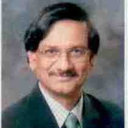An Ambispective Cohort Study to Assess Seizure Recurrences in Children with Calcified Parenchymal Neurocysticercosis.
Palabras clave
Abstracto
Calcified neurocysticercosis (NCC), previously thought to be a dead end, is an important risk factor for seizure recurrences. We studied the pattern of seizure recurrences and associated radiological findings in children with calcified NCC. In this ambispective cohort study, we enrolled children (age 1-15 years) with calcified NCC attending the pediatric NCC clinic between January 2017 and December 2017. Retrospective data were collected from the hospital records, and all enrolled children were prospectively followed up till June 2018. The study group divided into two groups: 1) children first presenting with calcified granuloma and 2) children presented with ring-enhancing lesion (REL) and transformed into the calcified lesion during follow-up imaging. During the study period (January 2017-December 2017), 520 children with NCC were screened and 128 with calcified NCC were enrolled. The mean age was 10.8 ± 3.2 years, and 63% were boys. Among 128 children, 40 (31%) had calcified granuloma and 88 (69%) had REL transformed to calcified granuloma. Sixty-one (49%) children had seizure recurrence: 22 (58%) within calcified granuloma group and 39 (45%) within REL transformed to calcified granuloma group (P = 0.18). Seizure recurrence was associated with the presence of perilesional edema (PE) in 35 (57.4%) children on computed tomography scan. The median interval between two seizure recurrences was 30 (17-56) months, and the median antiepileptic drug-free interval was 17 (12-22) months. The total duration of continued seizures was 42 (26-58) months, slightly longer in children with REL transformed to calcified granuloma group (42, 95% CI: 18-66 months) in comparison to calcified granuloma group (35, 95% CI: 10-60 months, P = 0.32). To conclude, children with calcified NCC have seizure recurrences over a prolonged period. Seizure recurrences are intermittent and may be interspersed with a prolonged period of quiescence in between. The presence of PE and contrast enhancement around the lesion during seizure recurrence suggests lesion reactivation.


